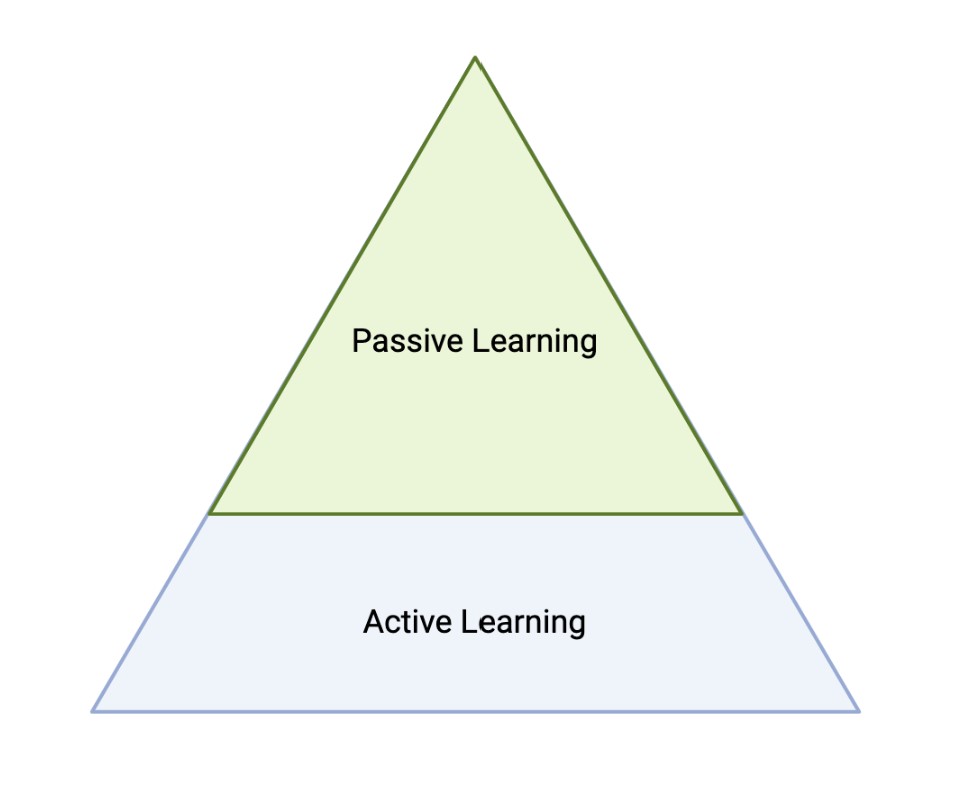Revolutionizing Education in Biology: Embracing Active Learning for Deeper Understanding and Engagement

Published on November 23, 2023
Another day, another lecture. You try not to fall asleep as you take biology notes for the hundredth time, knowing that class isn’t helping you understand neutrophils any better. Sound familiar? This “passive learning” approach to teaching is still extremely prevalent, with students being barely involved in their learning experiences. Students report having trouble paying attention, a lack of motivation to participate, and feeling as though they’re being tested on their ability to regurgitate information rather than learn.
So what can be done? Are you condemned to staring at diagrams about the parts of a white blood cell, and bullet-pointed lists about how they patrol our blood?
Wouldn’t it be more engaging to watch a CrashCourse video, make predictions on what happens with your friends, and compete with your classmates through a Kahoot to find out if you were right? The heart of the matter lies in recognizing that education should not be an act of "banking" knowledge into students' minds. For students to truly learn, it should instead be an active, dynamic, and reciprocal process that involves not just the teacher but the students themselves. These active learning techniques mentioned earlier are being embraced by educators and students alike, fostering engagement and deepening students’ understanding of course material.
The monotony of passively absorbing information through lectures can lead to boredom, disinterest, and, ultimately, a lack of retention. Students may find it challenging to connect theoretical concepts to real-world applications, as passive learning often focuses on the transmission of information rather than encouraging critical thinking and practical application. Moreover, the pressure to simply memorize facts for exams can create a superficial understanding of the subject matter, hindering the development of essential analytical and problem-solving skills. In a passive learning environment, it is common for students to feel a disconnect between the classroom content and its relevance to their lives, leading to decreased motivation and engagement.
Active learning methods offer a compelling alternative to these limitations. By actively engaging with the material through discussions, group activities, and hands-on experiences, students are more likely to develop a deeper understanding of the subject matter. Active learning encourages critical thinking, problem-solving, and the application of knowledge in practical scenarios, fostering a more holistic grasp of the content. It also promotes collaboration among students, allowing them to learn from each other's perspectives and experiences. The shift from a teacher-centered approach to a student-centered one empowers learners to take ownership of their education, making the learning process more personalized and meaningful. Research suggests that active learning can lead to improved academic performance, increased retention of information, and better adaptability for real-world challenges. As education continues to adapt to the needs of the modern learner, the incorporation of active learning techniques emerges as a vital step towards creating a more engaging and effective educational experience. Here’s a simple figure on how the information learned through active learning relates to that of passive learning:

So what does this look like in the classroom? Let’s consider Dr. Laura Ott’s (Episode 3’s featured guest) favorite cell, the neutrophil. In a traditional classroom setting, students might be asked to memorize the primary functions of neutrophils, which include detecting and combating pathogens. Many would read the functions over and over until they could repeat it to themselves, regurgitate the information on the upcoming exam, and forget all about neutrophils by the end of the month. In an active learning environment, students could delve into real-world scenarios where these cells are at work. They might simulate a scenario of infection, acting as neutrophils themselves, discerning and intercepting harmful invaders. Maybe students could use virtual reality or online platforms to explore the microscopic world, witnessing firsthand how neutrophils function within the human body. Collaborative projects could involve researching recent advancements in immunology, encouraging students to critically analyze and present their findings to the class. Additionally, incorporating discussions about the ethical implications of emerging technologies in medical research could stimulate thoughtful debate and broaden students' perspectives. This multifaceted approach not only enhances understanding but also cultivates essential skills such as teamwork, research, and ethical reasoning, preparing students for a more comprehensive and applicable grasp of complex biological concepts, transforming the subject matter from a dull list of functions into a dynamic, engaging experience.
In embracing the principles of active learning, educators embark on a journey to not only impart knowledge but to ignite a passion for learning within each student. The shift from the traditional teacher-centered model to a dynamic, student-centered approach signifies a commitment to cultivating critical thinking, adaptability, and collaboration—essential skills for success in an ever-evolving world. The call for innovation in education resonates in the tangible experiences of students, transforming once mundane subjects into vibrant, real-world explorations. By recognizing and addressing the limitations of passive learning, we can pave the way for an educational landscape where curiosity is nurtured, engagement is sustained, and students emerge not just with a degree but with a deep understanding and a set of skills that will serve them well beyond the classroom. Thank you all for reading, and as always, stay curious.
See you next time,
Parth and Chinmay